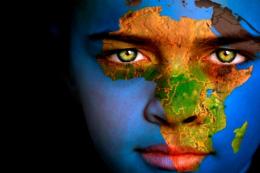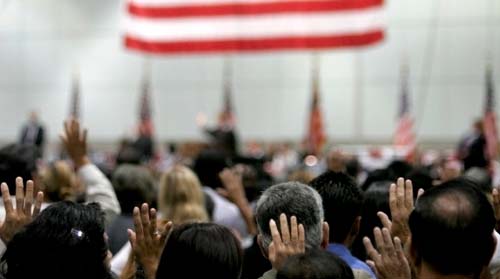|
|||||||||
|
By:
Allyson Escobar, Asian Journal | |||||||||
| Posted:
Oct,01-2015 16:16:08
| |||||||||
|
ACCORDING to a new report by the Pew Research Center, Asians are on track to become the largest population of immigrants in the United States. The study released on Monday, Sept. 28 also mentioned that the share of new Hispanic arrivals is smaller than it was 50 years ago, and that the percentage of the whole US immigrant population was higher in 1890 than it is today. By 2065, Pew projects that there will be 441 million people living in the US, and 88 percent of that growth will be attributed to future immigrants and their children. Asians are expected to outnumber Hispanics, making up 38 percent of all immigrants. The nearly 130-page document--entitled "Modern Immigration Wave Brings 59 Million to US, Driving Population Growth and Change Through 2065"--provides "nonpartisan analysis that explores trends and projects the future," and comes 50 years after the 1965 Immigration and Nationality Act, CNN reported. The act took away a quota system that once favored European immigrants, and replaced it with a policy that looked toward reuniting immigrant families and providing necessary employees. Since the act's passage, about 51 percent of immigrants have come to the US from Latin America, and a quarter of new immigrants have come from Asia. The US currently holds the largest immigrant population in the world--today, about 14 percent of the nation's population are immigrants, but that number is expected to rise to at least 18 percent, Pew Research Center projected. Of the current largest immigrant groups, Hispanics made up 4 percent of the total U.S. population in 1965. Today, they make up 18 percent, and by 2065, that figure is projected to be 24 percent. Asians, meanwhile, were less than 1 percent of the total population 50 years ago--today, their numbers went up to 6 percent in 2015, and they are expected to meet 14 percent by 2065. Earlier data from the Migrant Policy Institute revealed Asians have one of the highest naturalization rates in the country. While only 47 percent of all immigrants in the country are naturalized, the number for Asian immigrants is considerably higher, at 59 percent. Breaking it down by Asian subgroups, data found that Vietnamese and Taiwanese immigrants have the highest naturalization rates at 76 percent and 74 percent, respectively. Data reveals 59 percent of Koreans, 51 percent of Chinese, 47 percent of Indians, and 68 percent of Filipinos are naturalized. As of 2013, 1.26 million Filipinos are US naturalized citizens; 43,489 of whom were naturalized that year. Today, the total Asian population in the United States amounts to over 18 million --- nearly 18 times more than 1.5 million in 1970. Though Hispanics make up 47 percent of US immigrants, immigration from Latin American countries has generally slowed, especially from Mexico. "A steep decline began in 2007, in part because of the Great Recession," Mark Lopez, director of Hispanic research for Pew, explained. "It became more difficult to cross the border and to demographic changes in Mexico with fewer young people wanting to head north." Lopez, who oversaw this study, says the steady rise of Asian immigrants has "bubbled up" over the past decade, noting Chinese citizens who've flocked to the United States for educational opportunities like graduate school. He also mentioned the great influx of Indians arriving on visas to work in high tech, taking jobs in Silicon Valley. Of newer immigrants from the past five years, more have come from Asia (2.5 million) than from Central and South America (1.7 million). According to Pew, the US will no longer have a "majority group" within four decades. By 2065, Hispanics are expected to make up 31 percent of immigrants, the study predicts. Asians will later outnumber Hispanics to make up 38 percent of immigrants. "On one hand, US citizenship offers more security than let's say, permanent resident status, which can be lost or revoked in some instances. In addition, to having the right to vote and having the ability to run for political office, US citizens can sponsor a wider range of family members--they can bring children, spouses and parents quicker than what's allowed for the lawful permanent residents,” commented Jeanne Batalova, a senior policy researcher at the Migration Policy Institute. Becoming a citizen is "a very important step for the Asian American community because it allows them to become more integrated in America," said Jannette Diep, executive director of Boat People SOS-Houston, in a press call back in June. "This integration allows the AAPI community to become more visible in US cities, increasingly getting elected to public office. Some immigrants never thought they would become a US citizen and have the right to vote in their lifetimes." | |||||||||
|
Source:
| |||||||||
|
||||||||||||||||||||||||||||||||||||||||||||||||||||||||||||||||||||||||||||||||||||||||||||||||||||||||||||||
|
||||||||||||||||||||||||||||||||||||||||||||||||||||||||||||||||||||||||||||||||||||||||||||||||||||||||||||||


.jpg)




